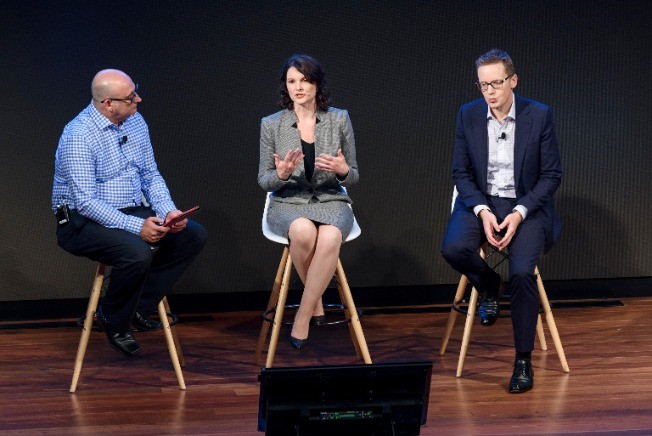DXC’s five E’s for an agile organisation: How you can develop & embed an agile mindset in your business

Agile is one of the top buzzwords for businesses that want a means of creating and maintaining a competitive edge. But agile can refer both to an organisation’s mindset, and the processes, models or methodologies to deliver on that mindset.
Deborah Holtham, Head of Workplace and Mobility for A/NZ at DXC Technology, the world’s leading workplace services provider, explains the difference and how any business can create their own agile mindset.
The roots of the agile model
The use of agile methodologies such as Lean, Kanban and scrum in software development circles has seen the profile of agile soar in recent years. Yet experts trace the origins of agile further back to the 1930s. The first extensive use of the methods was in Japan after the Second World War, where W. Edwards Deming developed the famous Toyota Production System — the primary source of today’s “lean” model.
Deborah says these processes and models can be thought of as agile with a big A. “However, in today’s world, it is agile with a little ‘a’ – a mindset and set of skills – that is moving beyond developer teams to have a much wider influence on business transformation.”

Deborah says this is down to a fundamental shift in how organisations need to look at strategies. “Gone are the days of grand five-year plans. Such is the pace of change and fierce competition brought by digitisation that businesses operating today need to be concentrating on what they can do to add most value right now,” she explains.
Agile-as-a-mindset
Deborah says agile-as-a-mindset is about having “an overriding focus on the customer and business value, and about delivering against that value frequently. It is not about having large, costly initiatives where the benefits take years to realise. Rather it means having the ability to stop a project or pivot to something that will drive immediate value.”
Some of the digital era’s biggest business success stories, including Netflix and Spotify, are founded on agile approaches that enabled them to gain huge market shares through innovative, rapidly iterated, customer-centric offerings. “Agile organisations that focus on the customer and work iteratively in response to feedback are less likely to waste significant time and resources on initiatives that won’t add value to the business,” Deborah says. “They can test what their customers want and then refine products and services until they meet that demand.”
According to Deborah, agile ways of working also lead to more empowered, happier and more productive staff. “Teams really benefit from agile models because each team member knows what their colleagues are working on and everyone understands the collective goals. This isn’t just a ‘nice to have’ either: the future workforce will demand this level of transparency as standard.”
For all the benefits, Deborah says there are sometimes hurdles to implementing an agile mindset, especially if it is a radical change from what was in place before.
“It changes the way people think about work, and it can take time for everyone to trust the process. Even when you are bought into the philosophy, putting it into practice can be hard,” Deborah acknowledges. “Last year, I implemented an agile operating model for our non-billable improvement initiatives. We tried various approaches but nothing worked at the beginning. I realised this was because I only put the lower priority tasks up on the board for the team to self-manage. I maintained too much control and direction over the higher priority activities. That meant that the broader team was not really doing meaningful work, and I wasn’t being adaptable. I had to learn to trust that the process and my team would deliver the best outcomes. Once I did that, the improvements followed.”
Envision, explore, elaborate, execute and evolve
For organisations wanting to adopt or improve their agile approach, Deborah recommends a simple framework based on five ‘E’s that will help businesses begin their agile journey.
“First, envision your organisation’s future. Where do you want to be? What are your business goals? Then explore what processes and initiatives make sense now to meet those goals. Elaborate on these initiatives and prioritise those that are going to have the most value. Most importantly, get started - execute on that priority list and finally evolve: refine what you have done to continue to improve results.”
When it comes to choosing an agile model, Deborah says analysing which methodology might work best is less important than getting started with an agile mind-set. “You don’t have to send people on courses or get them certified as Agile Grand Masters. Try a process out, and if it’s not right for you, then you can change it.” she advised. “That’s being agile in practice.”
If anyone doubts whether agile is here to stay, Deborah is confident that being agile will still as relevant in 2030 as it is today. “Models and processes come and go as they fall out of fashion but the agile mindset and principles are going to remain important. I have no doubt that the successful businesses of the future will be agile businesses.”
This article was written with the support of our partner, DXC Technology ANZ.